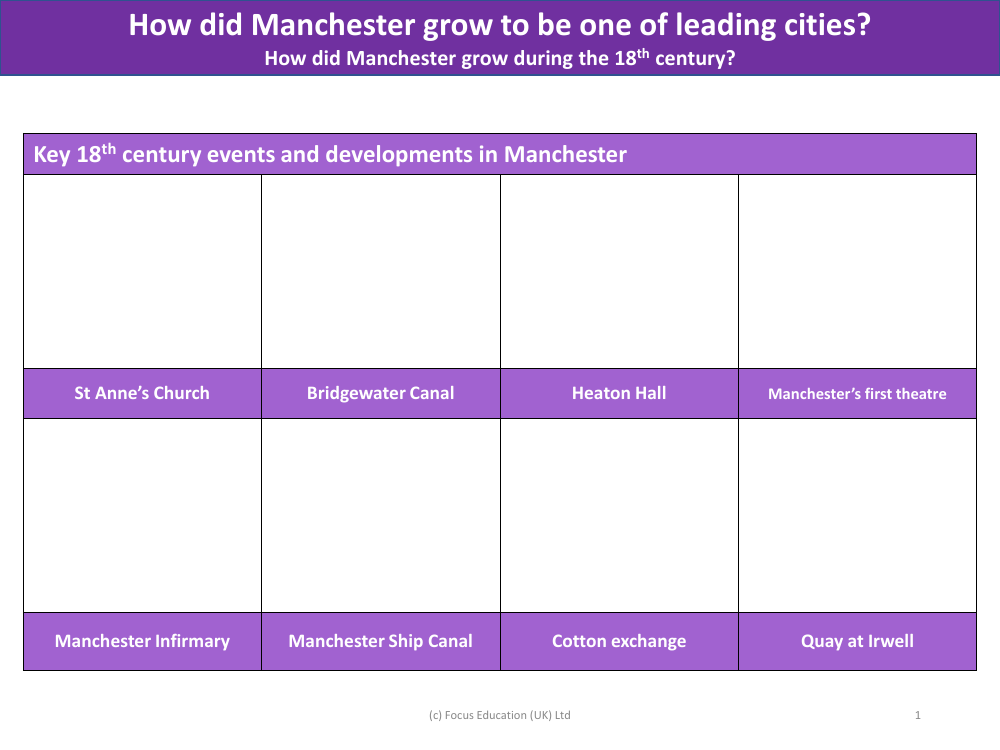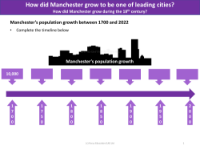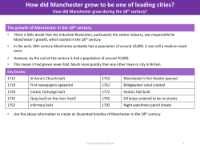Key 18th Century developments in Manchester - Worksheet

History Resource Description
During the 18th century, Manchester witnessed several significant developments that contributed to its growth into one of the leading cities in the UK. Key historical landmarks and infrastructure projects emerged during this period, shaping the city's social and economic landscape. St Anne's Church, an architectural gem and place of worship, was established, becoming an integral part of the community. The Bridgewater Canal was another monumental achievement, enhancing transportation and trade, while Heaton Hall represented the opulence and grandeur of the era. The establishment of Manchester's first theatre marked a cultural advancement, providing a venue for entertainment and the arts.
Healthcare and commerce also saw major advancements with the founding of Manchester Infirmary, a pivotal institution in the city's medical history. The Manchester Ship Canal was a groundbreaking project that opened up shipping routes and facilitated the import and export of goods, bolstering Manchester's status as an industrial hub. The Cotton Exchange became the heart of the global cotton trade, reflecting Manchester's prominence in the textile industry. Additionally, the development of Quay at Irwell played a crucial role in the city's maritime activities. These developments collectively spurred Manchester's growth during the 18th century, laying the foundation for its future as a thriving metropolis.





